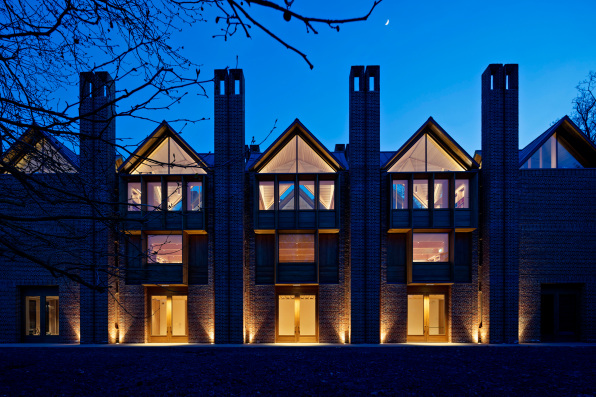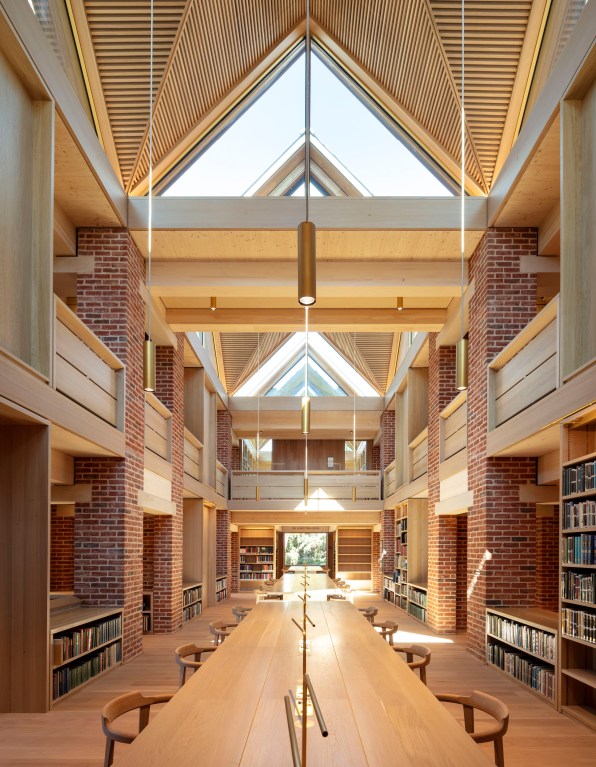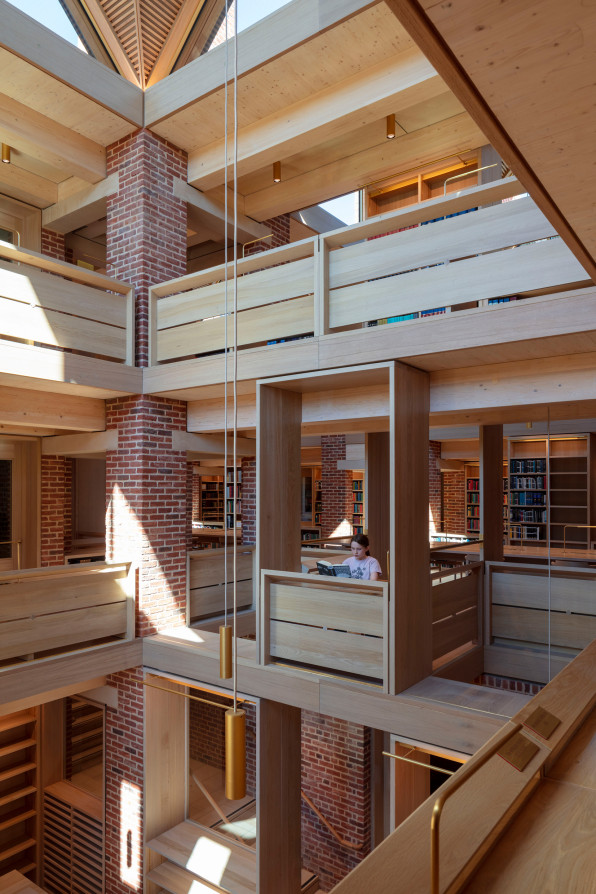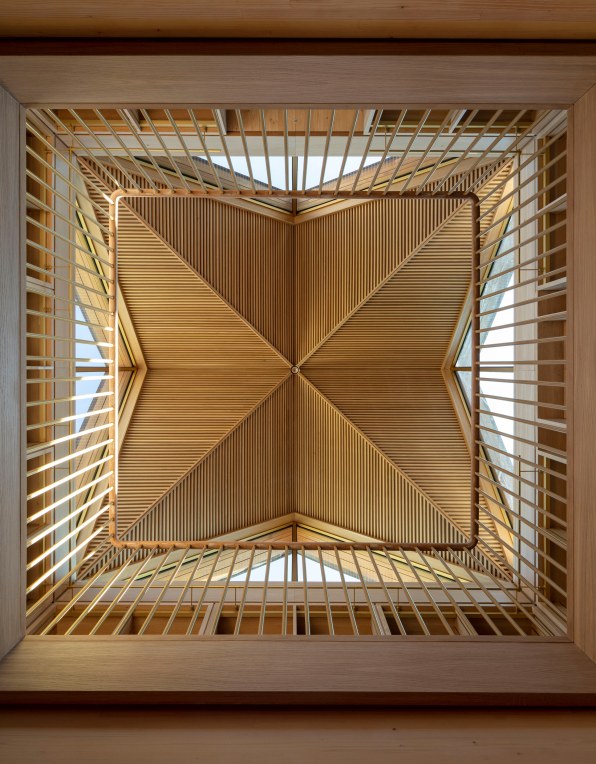[ad_1]
The Magdalene College Library has just swooped up the Royal Institute of British Architects (RIBA) 2022 Stirling Prize, which celebrates the most significant building of the year.

An elegant marriage of load-bearing brick walls, gabled pitched roofs, and brick chimneys, the building is located in a 700-year-old college that’s part of the University of Cambridge. It replaces a cramped library next door with a new structure that houses a larger library, complete with an archive facility and a picture gallery. Designed by the London-based firm Niall McLaughlin Architects, the library opened in 2021.

The Stirling Prize jury selected the Magdalene College Library from a list of six shortlisted projects in the U.K., including a primary school with a red brick facade and cloistered courtyard in London, and a 1980s’ office building that’s been repurposed into a flexible commercial space. The 2022 RIBA Stirling Prize jury praised the winning project for its “sophisticated, generous, architecture that has been built to last.”
The award, marking RIBA’s 26th edition, reflects a growing movement to design durable buildings that can stand the test of time and amortize the environmental cost associated with building them in the first place. (A similar trend can be seen in design more broadly, with companies like Fairphone or Waymo, Google’s autonomous car company, challenging planned obsolescence policies with products designed with longevity in mind.)

Buildings generate almost 50% of annual greenhouse gas emissions in the U.S. alone. 11% of those emissions come from the energy that goes into sourcing and manufacturing building materials, plus the energy required to construct the building and eventually demolish it. Some experts consider this footprint, known as embodied carbon, to be the building industry’s next big challenge.

At the Magdalene College Library, the architects reduced the building’s embodied carbon by replacing typical steel and concrete beams with exposed glulam and cross-laminated timber. Meanwhile, the building’s operational carbon, which includes the energy that’s used to heat, cool, and ventilate the interior, is alleviated with an airtight building envelope and a natural ventilation system that help future-proof the building. Fresh air comes in at the lower level and is carried up through brick chimneys. Meanwhile, four vaulted skylights let daylight stream into the space.
The resulting interior looks crisp and airy, with oak-framed windows designed to weather to a silvery gray, which will eventually match the surrounding buildings’ stone facades. “We were asked to build for the long-term using present resources wisely,” Níall McLaughlin said in a statement.
According to a study of 227 demolished buildings in North America, most are demolished because land values change, and many structures aren’t built to adapt to evolving needs—not because of structural reasons related to materials and construction. By that logic, and given its location in a 700-year-old establishment, the new library’s fate is probably safe for as long as the building lasts. But for buildings in denser environments, where circumstances are more prone to change, the study is a useful reminder that longevity only matters if the design can bend enough to accommodate another use—even if that use comes into play 400 years later.
[ad_2]
Source link

